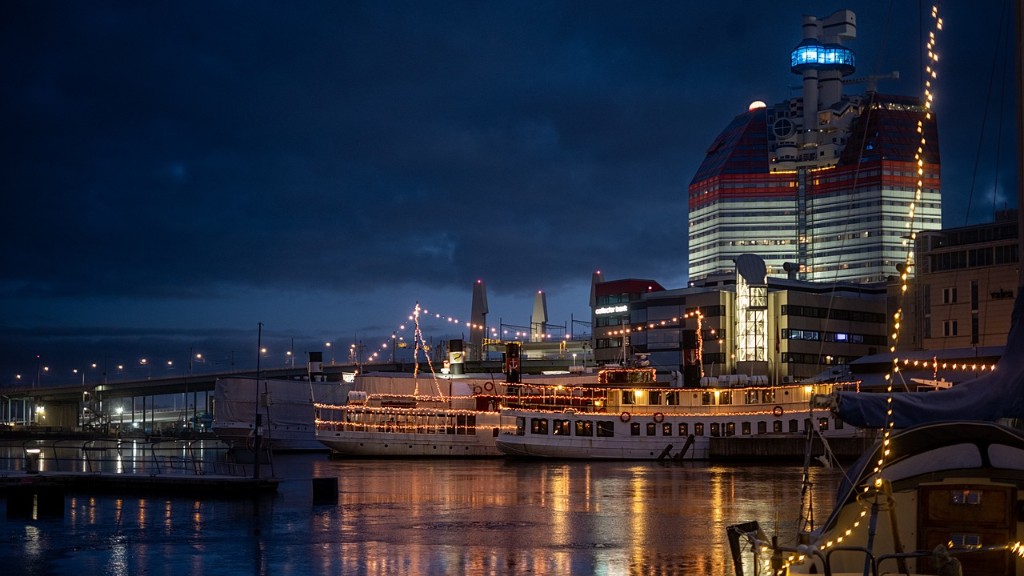How did Greta Thunberg travel from Sweden to the US?
Greta Thunberg, the remarkable Swedish teenager who has become a powerful advocate for climate change action, recently made headlines with her unconventional and carbon-neutral journey from her home country to the United States. As a committed environmentalist, Thunberg refuses to fly due to the significant carbon emissions associated with air travel. Instead, she embarked on a remarkable journey that combined various modes of transportation, capturing the world’s attention and inspiring many to rethink their own travel choices. Let’s take a closer look at how Thunberg made her way across the Atlantic.
Thunberg’s journey began in August 2019, when she set sail from Plymouth, England, aboard the Malizia II, a zero-carbon racing yacht. The boat, skippered by Pierre Casiraghi and Boris Herrmann, offers state-of-the-art technology, including solar panels and underwater turbines, allowing it to operate without using any fossil fuels. The 60-ft. sailboat journeyed for two weeks across the treacherous North Atlantic, highlighting the importance of reducing emissions and the potential for sustainable transport alternatives.
Upon reaching New York City on August 28th, Thunberg was greeted by a throng of supporters and media. However, her journey did not end there. Thunberg needed to travel throughout the Americas to attend various climate change events and conferences. To avoid relying on air travel, she opted for trains and electric vehicles, which generate significantly fewer emissions. This decision allowed her to maintain the integrity of her message and showcase the possibilities of sustainable transportation choices when faced with a global challenge like climate change.
While Thunberg’s commitment to her cause is commendable, her mode of transportation sparked some controversy and debate. Critics argued that her journey was nothing more than a publicity stunt, questioning the practicality and feasibility of using carbon-neutral transportation for global travel. They argued that such options are not readily available to the majority of people, and therefore, Thunberg’s choice is unrealistic and unattainable for everyday individuals.
However, experts and environmentalists have praised Thunberg’s decision, emphasizing the importance of her message and the need to find alternatives to air travel. According to the International Council on Clean Transportation, aviation is responsible for approximately 2% of global carbon dioxide emissions. By embarking on a carbon-neutral journey, Thunberg showcased both the urgency of the climate crisis and the potential for change if individuals and industries embrace more sustainable transportation options.
Thunberg’s journey also sparked a broader conversation about the role of air travel in our carbon-intensive society. Many organizations and individuals are now examining their own travel habits and exploring opportunities to reduce their carbon footprints. As a result, some countries and airlines are investing in renewable aviation fuel and exploring the possibility of electric aircraft. By raising awareness and challenging the status quo, Thunberg has successfully ignited a global dialogue about the intersection of transportation and climate change.
Impact on Public Perception and Behavior
Greta Thunberg’s extraordinary journey has had a profound impact on public perception and behavior, serving as a catalyst for change. Her commitment to reducing carbon emissions through her unique travel choices has inspired countless individuals to reconsider their own behaviors and make greener transportation decisions. Thunberg’s journey highlights the power of leading by example when it comes to encouraging sustainable choices.
Furthermore, Thunberg’s message serves as a reminder that the transportation sector is a significant contributor to climate change. By focusing on alternative modes of transportation, individuals can play an active role in reducing greenhouse gas emissions and mitigating the impacts of global warming. Thunberg’s high-profile trip has changed the narrative around travel and challenged societal norms, leading to a greater push for innovation and the rapid development of greener transportation options.
Challenges and Barriers of Sustainable Transport
While Thunberg’s journey showcased the possibilities of sustainable transport, there are still significant challenges and barriers to widespread adoption. One of the main hurdles is the limited availability and high cost of carbon-neutral transportation options. Electric vehicles, for example, can be prohibitively expensive for many individuals, and the infrastructure for charging stations is still insufficient in many regions.
Additionally, while Thunberg was able to use trains and electric vehicles for her journey across the Americas, this may not be feasible for every long-distance trip. In many parts of the world, train networks are underdeveloped, and electric vehicle charging infrastructure is lacking. Governments and private companies must invest in expanding and improving these networks to make sustainable transport a viable and accessible option for all.
;
Future of Sustainable Transportation
Greta Thunberg’s unconventional journey has undeniably sparked a global conversation about the future of transportation and the need for sustainable alternatives. As sustainable transportation technology continues to advance, the options for low-carbon travel are expanding.
Electric vehicles are becoming more affordable and offer longer ranges, reducing concerns about limited charging infrastructure. Additionally, developments in renewable fuels for aviation are gaining traction, offering the potential to significantly reduce carbon emissions from air travel.
However, true progress requires a collective effort from individuals, governments, and industries. Governments must invest in renewable infrastructure and incentivize the adoption of low-carbon transportation options. The private sector must continue to innovate and develop greener alternatives. And individuals must demand and embrace sustainable options, leveraging their power as consumers.
Ultimately, Greta Thunberg’s journey serves as a rallying cry for change. It reminds us that we all have a role to play in addressing the climate crisis, and that even seemingly small actions, such as choosing sustainable transportation, can have a significant impact when multiplied by millions. By reimagining our transportation systems and embracing sustainable solutions, we can create a more resilient and environmentally-friendly future for generations to come.



